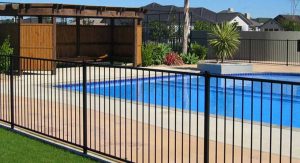
POOL FENCING REGULATIONS
A backyard swimming pool was deemed unsafe by council inspector before toddler drowning
In recent news, it was reported that a local council was negligent because they failed to follow standard Pool Fencing safety procedures when they inspected a resident’s non-compliant pool 2 years ago by not providing a date for work to be completed. By law, they were required that all window openings in the pool area had a maximum opening of 100mm and a self-closing double gate or have a latch 1.5m high but the work was never completed. This resulted in a toddler drowning recently (2019), 2 years on from deeming the pool non-compliant with safety regulations.
Pool Fencing Australian Standards
Australia has a Standard for Pool fencing for every pool owner to ensure the safety of everyone and eliminates the chances of drowning, especially in young children.
In South Australia, we follow the current Australian Standard AS1926-2012. The standard is called up by the Building Code of Australia (BCA) and in many cases, there are local variations effected under legislation. If your property with a swimming pool or spa pool built before July 1993 you must make sure that the fence meets today’s standard for new pools.
Pool Fence Height
A pool fence may be constructed from any durable material protected against erosion, UV degradation and other effects of exposure to weather, sunlight, pool chemicals and water; free from sharp edges, sharp projections and similar hazards. A pool fence must be at least 1.2 metres all around the pool.
A non-climbable zone (NCZ) is required for fences under 1.8m. A non-climbable zone is a 900mm vertical plane adjacent to a fence, running the full length of the fence and gate to stop young children from climbing over the fence.
If your pool fence is non-complaint with these requirements, seek immediate advice from a licensed builder or pool inspector.
Gap at Bottom
The gap at the bottom of the fence must be maximum 100mm all around the fence and gate. This prevents young children from climbing under the fence.
Pool Gates
Gates must be hung so they swing outwards, away from pool. They must swing freely through its arc of operation; therefore, nothing should obstruct the gate’s swing. All gates must be fitted with a self-closing device, so that the gate closes automatically from any position without the use of manual force.
A latching device must be fitting to all gates that will automatically operate on the closing of the gate and prevents the gate from being reopened without manually released and should not be able to locked in the “open” position or adjusted without the use of tools. Pool latches can be purchased from a hardware store and easily installed.
Windows
If a window opens directly into the pool area and is less than 1800mm from the sill of the lowest opening panel to the finished ground level, the window must; be either totally covered by bars or a metal screen with the horizontal openings between the bars no greater than 100mm, or; be fixed to the building with fasteners so that it’ll remain closed or will only open to a maximum of 100mm.
It is also recommended to place CPR signage in the pool area as a constant reminder of what to do in an emergency. Complaint CPR signs detail the DRSABCD first aid method.
It is a pool owner’s responsibility to ensure their pool is compliant, especially before selling or leasing their property. If you are worried or unsure your pool fence is compliant with Australian Standard, then contact Epic Projects and Consulting for a pool fence inspection.
